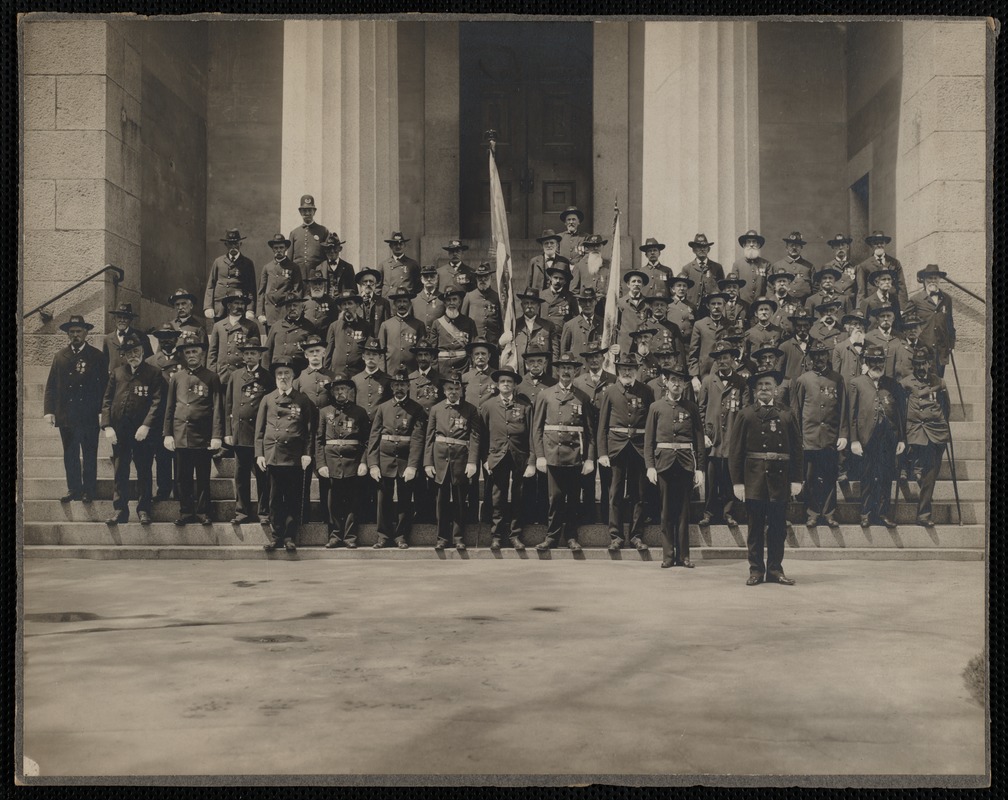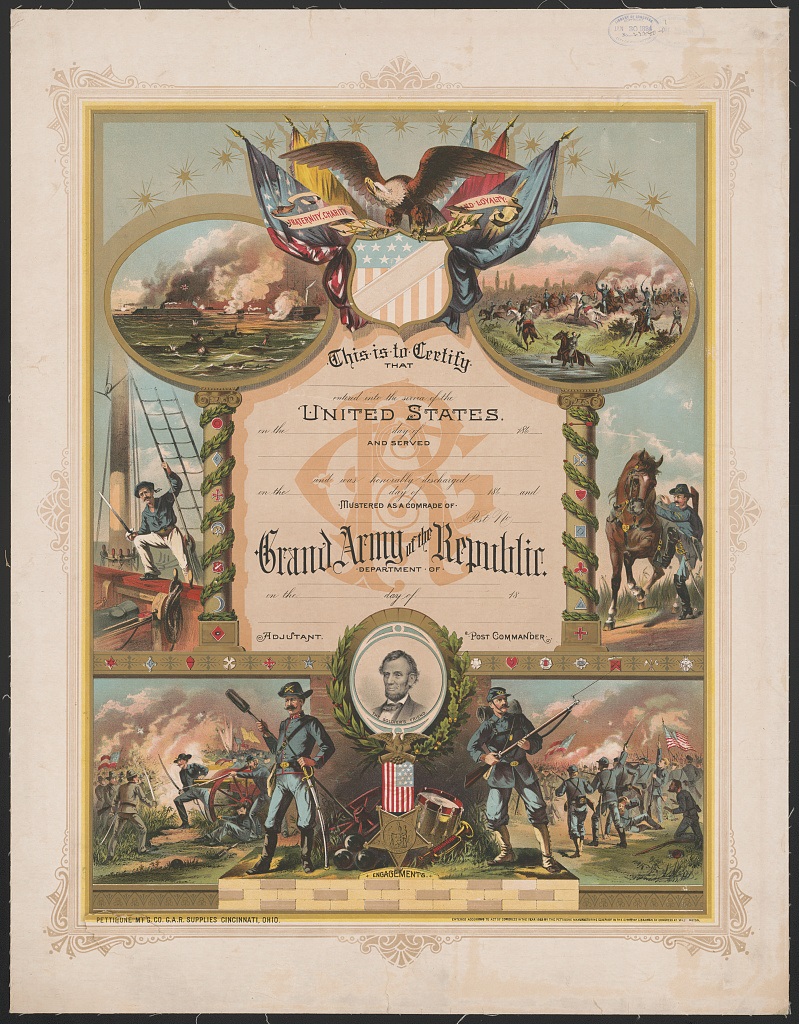By Graham Warder, Ph.D., Keene State College
In the decades after the Civil War, there was no separate organization representing disabled Union veterans. Instead, they joined, like so many other veterans, the Grand Army of the Republic (GAR). The GAR became very effective in pressure politics, especially in its promotion of veterans’ pensions in the late nineteenth century. It was, in effect, both a fraternal organization and a political advocacy group.
Fraternal organizations abounded in nineteenth-century America. Temperance societies, Freemasons, the Odd Fellows, the Benevolent and Protective Order of Elks, and the Knights of Columbus are just some of the societies that provided men both sociability and mutual aid during a tumultuous century. The Grand Army of the Republic, under the slogan, “Fraternity, Charity, and Loyalty,” met similar needs for Union veterans.
Founded on April 6, 1866, by Major Benjamin F. Stephenson, a surgeon with the 124th Illinois Infantry, the GAR grew rapidly in the 1880s and reached its height in the 1890s, when it had over 450,000 members and 7500 Posts throughout the United States. It sought to recreate the camaraderie of military service, and its organization mimicked military hierarchy, including leadership at the national level by a “commander-in-chief.” Local posts modeled their meetings and inductions on the rituals of Masonic lodges.

If GAR Posts provided opportunities for comradeship and shared memories at the local level, the national organization. quickly became a powerful political force, especially within the Republican Party. They established soldiers’ homes, helped make Memorial Day a national holiday, and effectively lobbied for more generous pensions for Union veterans. Five Presidents (Grant, Hayes, Garfield, Harrison, and McKinley) were themselves members of the GAR.

One of the biggest attractions of the GAR were its annual encampments. These gatherings lasted for days and included camping out, formal dinners, speeches, and commemorations. The encampments brought considerable economic benefits to hosting communities like Weirs Beach in New Hampshire. They were a good example of how Civil War memory was commercialized in the late nineteenth century.

https://en.wikipedia.org/wiki/Grand_Army_of_the_Republic#/media/File:GARProgram-cover.jpg
The Grand Army of the Republic did help disabled veterans but often used amputees, or “living monuments,” as symbols leveraged to ensure more generous pensions for all Union veterans. The stress on amputation as the quintessential Civil War disability meant that those with less visible, and more common, disabilities received far less sympathy, attention, and assistance.
Sources:
Jordan, Brian Matthew. Marching Home: Union Veterans and Their Unending Civil War. New York: Liveright, 2015.
McConnell, Stuart. Glorious Contentment: The Grand Army of the Republic, 1865–1900. Chapel Hill, NC: University of North Carolina Press, 1997.